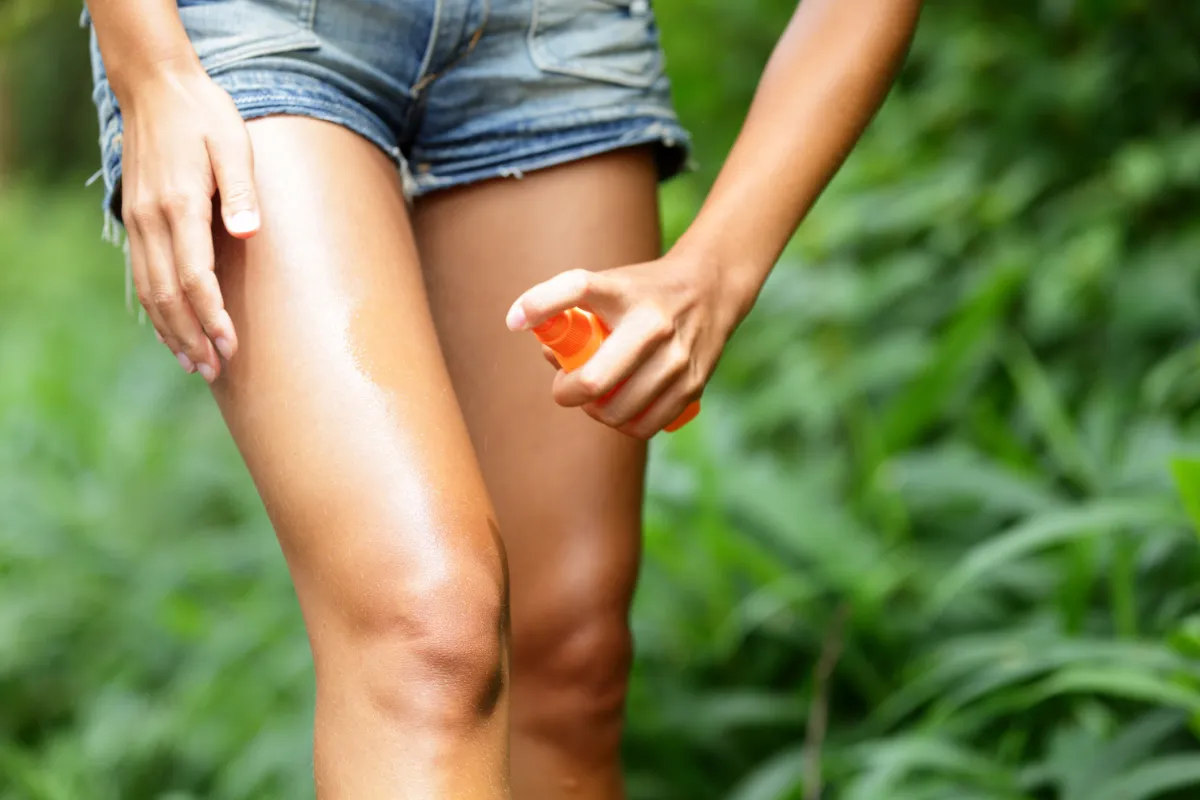
Alaska is a land of majestic mountains, crisp glacial streams, and abundant wildlife, but within all of that gorgeous landscape, there is one pesky creature that can make a trip into the outdoors a rough experience – the mosquito.
Throughout the summer, mosquitos can be seen in swarms across Alaska’s wilderness. For those new to traveling in Alaska, this experience can be both shocking and rather unpleasant. In this guide, we will walk you through how to avoid mosquitos on your trip and what to pack – so you can focus more on the vistas, and less on the annoying buzzing in your ears!
Alaska's Unofficial "State Bird": The Mosquito
If you've ever spent time in Alaska during the warmer months, you may have heard locals jokingly refer to the mosquito as the state's "official" bird. Although the Willow Ptarmigan holds the official title, the mosquito makes a compelling case for the crown with its unyielding presence and indomitable spirit.
Alaska is home to 35 different mosquito species, and while their size and abundance can vary, one thing is sure: when the temperature rises, these little critters come out in force. With the state’s expansive wetlands, stagnant pools, and slow-moving rivers, Alaska becomes the perfect breeding grounds for these biting bugs.
While their incessant buzzing and itchy bites can be a nuisance, it's important to note that mosquitos in Alaska are generally low-risk carriers of diseases. Unlike their counterparts in tropical regions, Alaskan mosquitos are more bothersome than harmful. The fear of mosquito-borne diseases such as Zika or Dengue should not deter you from this trip of a lifetime.
Mosquito-Free(ish) Destinations
While avoiding mosquitos entirely in Alaska during the peak season might be impossible, some destinations are generally less mosquito-infested. The coastal regions and areas with a constant breeze, such as the Kenai Peninsula and the islands of Southeast Alaska (like Juneau, Ketchikan, and Sitka), and islands (such as Kodiak) usually have fewer mosquitos due to their windy conditions and salty air. The cities of Anchorage and Fairbanks, while located in the interior, also tend to have fewer mosquitos due to their urbanized areas and maintained public spaces.
Mosquitoes are most common in the interior and arctic regions of Alaska. Their numbers significantly increase during the late spring and summer, with the peak season falling in June and July. During this period, mosquitos can become particularly bothersome, especially in areas with still, windless conditions where they thrive. These tiny critters are most active at dawn and dusk, so be prepared if you're heading outdoors during these times in these primary regions.
How to Outsmart the Alaskan Mosquito
Contrary to popular belief, outsmarting Alaska's mosquitos doesn't require becoming an expert entomologist. Here are some practical tips:
- Dress Appropriately: Wear long-sleeved shirts, pants, and hats. Consider light-colored clothing as mosquitos are more attracted to dark colors.
- Avoid Peak Times: If possible, try to plan your outdoor activities during the times when mosquitos are less active. This is typically midday when the sun is at its peak and late evening after dusk.
- Stay in the Wind: As mosquitos are weak flyers, they prefer areas with little to no wind. So, pick a breezy spot for your picnic or a windy hilltop for your hike. If you know you will be hiking through boggy areas, try to pick a day to hike where there is a slight to moderate wind.
- Avoid Stagnant Water: Mosquitos breed in stagnant water. Avoid camping or resting near still pools or slow-moving rivers.
- Enjoy the Rain: Rain is almost guaranteed in Alaska during the summer. While hiking in the rain may not sound like your first-choice, this is a great option to help avoid mosquitoes while out and about. Light and moderate rain can help keep the pesky bugs away and still allow you to enjoy your hike.
Armoring Up: Mosquito-Repellent Gear
To further fortify your defenses against these buzzing bugs, consider incorporating some mosquito-repellent gear into your adventure kit:
- Repellent Sprays and Lotions: DEET, Picaridin, and Lemon Eucalyptus Oil are among the most effective mosquito repellents. These come in various forms, including sprays, lotions, and wipes. You can also pick up a citronella candle at local grocery stores and outfitters to burn while you are camping or picnicking. These candles help keep mosquitoes to a minimum.
- Wearable Repellents: Wearable repellents like mosquito-repellent wristbands are a handy option, especially for kids. You can pick up a variety of options in grocery stores and outfitters throughout the state at a low cost.
- Mosquito-Repellent Clothing: Many outdoor clothing brands offer lines of clothing treated with permethrin, a powerful insect repellent. If you are planning on heading into the interior or up to the arctic, consider investing in a “bug jacket”, a jacket specifically designed to protect you from mosquitos and midges.
- Mosquito Nets and Screens: If you're camping, a mosquito net can be a lifesaver. These can be draped over your sleeping area to create a bug-free zone or you can set one up around your picnic table to enjoy bug-free dinners with your family.
- Head Nets: While not the most fashionable accessory, a mosquito head net can make your Alaskan adventures much more enjoyable. Especially when hiking or fishing in the peak mosquito season, it's better to look a little goofy than to be constantly swatting away these pesky insects. Pair your net with a sun hat or a ballcap to allow the net to sit away from your face.
Embrace the Adventure, Not the Bite!
Though they may be annoying, mosquitos shouldn't deter you from experiencing the breathtaking beauty that Alaska has to offer. The key is to be prepared and equipped with the right tools and knowledge to coexist with them. So pack your bags, and arm yourself with your mosquito gear. Alaska is waiting for you - vast, untamed, and, yes, a little buzzy.

